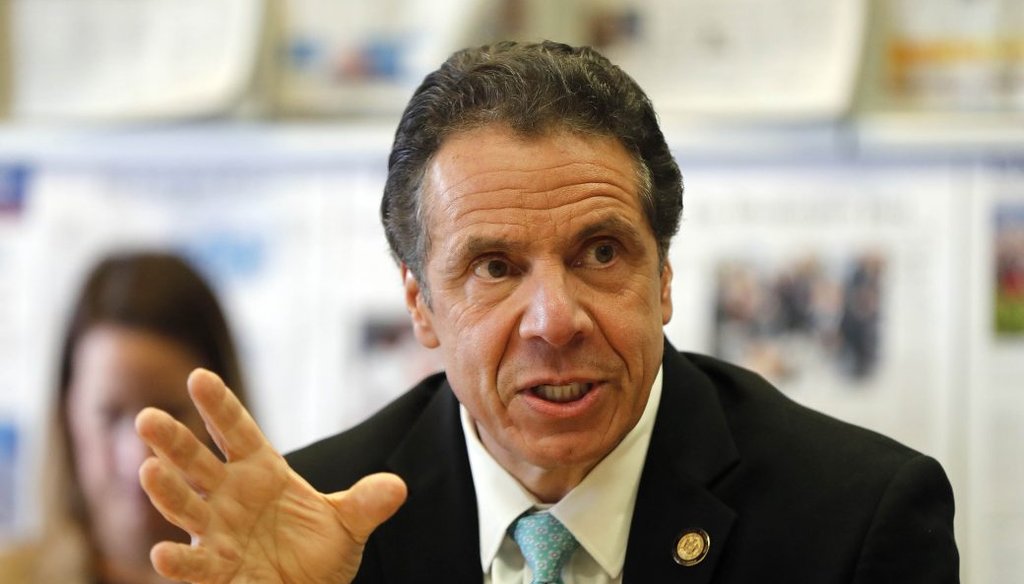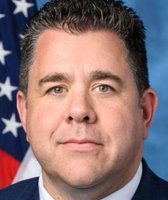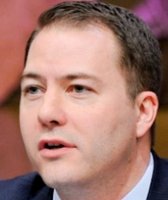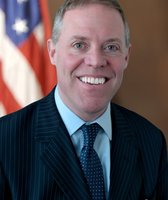Stand up for the facts!
Our only agenda is to publish the truth so you can be an informed participant in democracy.
We need your help.
I would like to contribute

Gov. Andrew Cuomo speaks at a Buffalo News editorial board meeting in 2019. (Mark Mulville/Buffalo News)
Cuomo's claim on property taxes omits mandates
Gov. Andrew Cuomo’s push for a property tax cap in 2011 and his successful efforts to make it permanent have pleased fiscal watchdogs. At least one study shows that it has saved property taxpayers more than $25 billion.
But we were skeptical about his recent claim that the state has "nothing to do" with property taxes. Cuomo made the remarks during an interview with a Long Island radio station.
"Property taxes are the killer tax in the state of New York," Cuomo told host Jay Oliver on 103.9 FM. Cuomo said it’s been a problem since Franklin D. Roosevelt was governor, which was from 1929 to 1932. "It has nothing to do with the state. I may be a little defensive for a second because it's early and I'm a little defensive. FDR used to rail about the property tax. Because people think the state has something to do with the property tax and they used to complain about high taxes and FDR got very defensive and he said, 'I've got nothing to do with the property taxes, it's all local taxes and school taxes,' which is true. So I don’t control the property tax."
Cuomo has invoked Roosevelt’s thoughts on property taxes during several speeches, and on this topic, the two governors sound a similar note. In his 1932 annual message to the state legislature, Roosevelt talked about complaints from the public about property taxes: "After three long years during which I have tried in every part of the State to make people understand that real estate taxes have absolutely nothing to do with State Government, the public is at last coming to realize that the increase in real estate taxes is due wholly to the increase in the cost of local and not State Government."
Property taxes are collected by local governments and school districts as a way to pay for local programs, and local officials have control over big budget items such as contracts that set employee salaries. But that’s not all property taxes fund. Federal and state governments also mandate some programs, meaning they require school districts and counties to do certain things, but in some cases do not provide the financial support for these programs to be carried out.
A 2017 Cornell University survey of local governments, done in partnership with local government advocacy groups, found that the primary sources of fiscal stress for these governments came from state influence on their finances and service delivery. According to the Cornell survey, "the top three contributors to fiscal stress that local governments identified were stagnant state aid, state mandates, and the property tax cap." Cornell researchers cited another study, which found that New York state "decentralizes more expenditure and service responsibility onto local governments than any other state, except Nevada."
These underfunded or unfunded mandates, as they are known, are a topic of such concern for local governments and school districts that every year, local officials lobby the governor and state lawmakers for relief.
Medicaid is perhaps the most talked-about underfunded mandate in New York state. Though the state manages the Medicaid program, it shifts part of the cost of the program onto counties. The New York Association of Counties, which advocates on behalf of counties, calculates that in New York, counties spend more on state Medicaid costs than other counties across the country combined, not including voluntary payments counties make to support their public hospitals and nursing homes.
In 2015, the state capped the local Medicaid share, saving local governments more than $3 billion per year. "Even with the freeze, Medicaid remains one of the largest expenses faced by local governments in New York—and one they have little or no means to control," wrote Bill Hammond, director of health policy at the Empire Center for Public Policy, which is fiscally conservative.
"New York’s local share is still an aberration nationally;" the nonpartisan Citizens Budget Commission wrote in 2018. "New York requires more local contributions to finance Medicaid services than all other states in the nation combined."
Featured Fact-check
In addition to Medicaid, counties must share the cost of programs such as child welfare, indigent criminal defense, probation and preschool special education. In January, the New York Association of Counties estimated that up to 80 percent of a county’s total budget can be used to pay for state and federal mandates.
When we approached Cuomo’s press office about the governor’s claim, staff there connected us with Jim Malatras, a former director of state operations in the Cuomo administration who is now the president of Empire State College, part of the State University of New York. Malatras worked on the property tax cap as a member of the administration and studied the effects of the cap as president of the Rockefeller Institute of Government.
The governor "does not, by law, get to set what the property tax is," Malatras said.
Cuomo has helped property taxpayers by being "very aggressive" in managing local costs, Malatras said. He pointed to the establishment of a less generous pension tier, capping of the local share of Medicaid, and the property tax cap. The STAR program, which began under a previous governor, provides state funds to offset local school taxes. He also said that local governments and school districts have other sources of revenue in addition to property taxes.
"The state doesn’t have anything to do with property tax levies," Malatras said. Local governments engage in many activities that they have complete control over, such as economic development programs, and the wages they pay their employees, he said. Some mandates that local governments complain about are in the state constitution, or were established by the U.S. Supreme Court. Local government officials also complain about labor rules, but the state has to follow those rules too, Malatras said. As for complaints that the cap limits governments’ flexibility, as noted in the Cornell study, Malatras said that with enough support from governing bodies or voters, local governments and school districts can override the cap.
In the past, the Cuomo administration has acknowledged the financial burden the state places on local governments and has taken steps to address it. Earlier this year, Cuomo took credit for reducing property taxes.
Cuomo started a Mandate Relief Council, and in January 2012, Cuomo’s office announced the council’s first meeting, and described why it was necessary: "The State depends on its local governments and school districts to deliver essential services to its residents and often prescribes how these services should be provided. These requirements are woven throughout State laws and regulations limiting flexibility and increasing costs. The Council was created to find, review, and reform these mandates."
According to the "local government" section of Cuomo’s 2020 executive budget briefing book, the budget "continues Governor Cuomo’s commitment and track record of reducing property taxes."
Cuomo said the state has "nothing to do" with property taxes. It is true that local governments and school districts set property tax rates and collect property taxes. But when local officials set the amount that must be raised from property taxes, they must collect enough money to cover the cost of programs the state and federal governments have said they must provide, even in cases, like Medicaid, when they do not have control over the program’s administration. Local governments have other ways to raise revenue, but the property tax is one of their primary sources.
We rate Cuomo’s statement Half True.
Our Sources
Gov. Andrew Cuomo’s website, "Rush transcript: Governor Cuomo is a guest on Long Island News Radio with Jay Oliver," July 19, 2019. Accessed Aug. 6, 2019.
"Gov. Andrew Cuomo LIVE on LI in the AM with Jay Oliver!" podcast, July 19, 2019, via Apple Podcasts. Accessed Aug. 6, 2019.
Gov. Andrew Cuomo’s website, news release: "Governor Cuomo Announces Mandate Relief Council to Meet on Wednesday," Jan. 24, 2012. Accessed Aug. 6, 2019.
New York State School Boards Association, "Issue Brief: Mandate Relief," 2013. Accessed Aug. 6, 2019.
New York State Association of Counties, paper, "The State of State Mandates and How We Got Here," January 2019. Accessed Aug. 6, 2019.
New York State Association of Counties, video, "How State Mandates have Changed Counties," February 2016, via YouTube. Accessed Aug. 6, 2019.
Association of Towns of the State of New York, pamphlet, "2019 New York State Town Priorities," March 1, 2019. Accessed Aug. 6, 2019.
Citizens Budget Commission, blog post, "Still a Poor Way to Pay for Medicaid," Oct. 1, 2018. Accessed Aug. 6, 2019.
Rockefeller Institute of Government, paper, "If the Cap Fits, Let Them Wear It," March 6, 2019. Accessed Aug. 6, 2019.
New York State Division of the Budget, FY2020 Executive Budget Briefing Book, page 110. Accessed Aug. 6, 2019.
Email interview, Mark LaVigne, deputy director, New York State Association of Counties, Aug. 6, 2019.
Phone and email interviews, Jim Malatras, PhD., Empire State College president, Aug. 7, 8, 2019.
Reuters, "New York cuts pension benefits for public workers," March 15, 2012. Accessed Aug. 7, 2019.
New York State Association of Counties, "State and Federal Medicaid Financing Reforms Benefit County Taxpayers," NYSAC News, Spring/Summer 2018, page 14. Accessed Aug. 7, 2019.
Office of the State Comptroller, "2018 Annual Report on Local Governments," January 2019. Accessed Aug. 7, 2019.
Empire Center for Public Policy, report, "Shifting Shares: The Costly Challenge of a State Medicaid Takeover," July 10, 2018. Accessed Aug. 7, 2019.
Cornell University, Department of City and Regional Planning, study, "What causes local fiscal stress? What can be done about it?", May 2017. Accessed Aug. 7, 2019.
Cambridge Journal of Regions, Economy and Society, "Understanding employment growth in the recession: the geographic diversity of state rescaling," Yuanshuo Xu, Mildred E. Warner, July 2015. Accessed Aug. 7, 2019.
Public Papers of the Presidents of the United States, Franklin D. Roosevelt, 1940, p. 117-118, via Google Books. Accessed Aug. 9, 2019.
Browse the Truth-O-Meter
More by Jill Terreri Ramos
Cuomo's claim on property taxes omits mandates
Support independent fact-checking.
Become a member!
In a world of wild talk and fake news, help us stand up for the facts.


















































